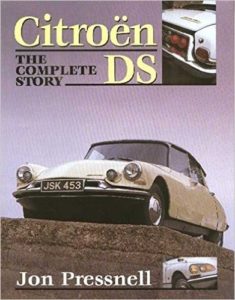by George Dyke…..
Digging through our Citroënvie archives the other day, I came across notes I made during a presentation by Jon Presnell on the Traction Avant. They were made during my trip to the 75th Anniversary of the Traction Avant gathering in Arras France in 2009. Discussing the research and knowledge he amassed over the years writing his Citroën reference books, John shared some interesting revelations about the Traction Avant and André Citroën. He made some interesting points, some that have not been revealed about its history, and offered his perspective on this most significant automobile.
Here is what Jon said:
- André Citroën built a massive munitions business with plants that after WWI were converted to automobile production. Their manufacturing method was replicated in France from the production line assembly process that Ford introduced in the USA. However, in all the effort involved in establishing his company the Traction Avant was the most calculated thing he did in his career.
- Yet the attraction of a is also a car that shows André Citroën’s mistakes. Trying to adapt mass production to a small French market he became too carried away with mass production.
- Introducing all steel bodies in 1932 was when André Citroën learned his lesson. While on one hand it was a good thing that it forced him to build a new factory, tooling for monocoque bodies was expensive.
- The Traction Avant started out in design as a small lightweight car.
- In 1934 when it launched it was a rolling catastrophe. But after sorting out it’s shortcomings in the first couple of years, and when the company recovered from bankruptcy that placed it in Michelin’s hands, Citroën [the company], was incredibly lucky that the car came along. The Traction was in production and it was very robust.
- Competitors cars, (like Renault and Fiat), we’re not up to snuff.
- Only when the Renault 4CV got reliable did Traction sales begin to fall. And Peugeot was a competitor only in the late 1950’s and early 1960’s.
- The Traction was the common denominator of all the great cars after it. The mini – the Jaguar – everybody tore Tractions apart to study them.
- If the Austin Mini can be said to be the “Father” of the modern car, the Traction Avant can be considered the Granddaddy of the modern car.
- The Morris Minor was a copy of the Traction Avant.
- In 1953 the Traction Avant had its strongest sales.
- The Renault 16 in 1965 was essentially a Traction Avant and Citroën attempted to take them to court. Renault did hit a target market with their [contemporary styled] car car and that was a concern for Citroën.
Slough built Tractions were named differently than the French and Belgian built models, not only in name and right hand drive steering but also in terms of finish; 12 volt electrics, Smiths instruments, wooden dashboards, Connolly leather interiors, chromed grills and a choice of colours other than black. Due to differences in the calculation of fiscal horsepower, the cars were given different names:
– the 7CV became the Light Twelve
– the 11CV became the Light Fifteen or in long wheelbase version the Big Fifteen
– the 15CV became the Six Cylinder or Big Six
Jon clarified some “myths” about Slough Tractions:
- They started with the Super Modern Twelve with a 1600 cc engine. They called that the Sport Twelve and Super Modern Twelve.
- Slough built Tractions had wooden dashboards after 1937 and leather seats after 1937.
- The Light Fifteen and big Fifteen we’re introduced after 1939.
- The British Traction did not sell well pre-war; just 700 were sold vs 53,000 of the Morris Minor.
- Most exported Tractions did not have sunroofs. They became optional at home in 1949,
- 1955 was the last year of Traction production in Slough. 500 Tractions were built.
- Total sales postwar were 19,000 cars.
- The Traction was the most important vehicle manufactured at Slough because it set Slough up for successful production of the 2CV and the DS.
- England [Slough] was recognized as producing better cars with better paint because they had the time (over mass produced French cars) and they were sold as upscale.
Jon Presnell’s books on Citroën:
Citroën Traction Avant – hardcover – published January 2006 – ISBN-13: 9781861266149

Citroën DS: The Complete Story – hardcover – published June 1999 – ISBN 1 86126 055 5


